site search
online catalog
VERY SCARCE 1832 DATED FOOT ARTILLERY SHORT SWORD, FIRST YEAR OF PRODUCTION

Hover to zoom

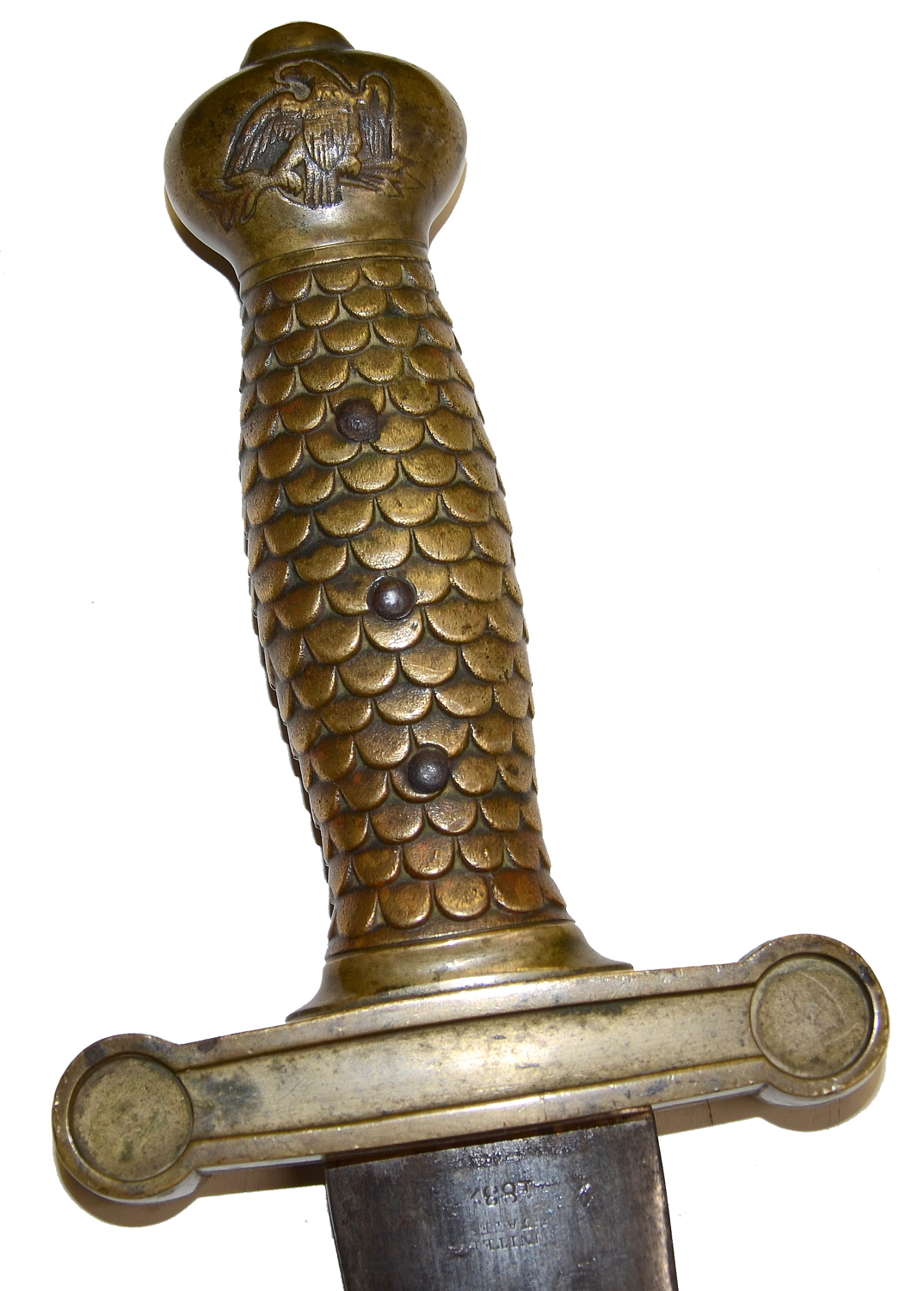
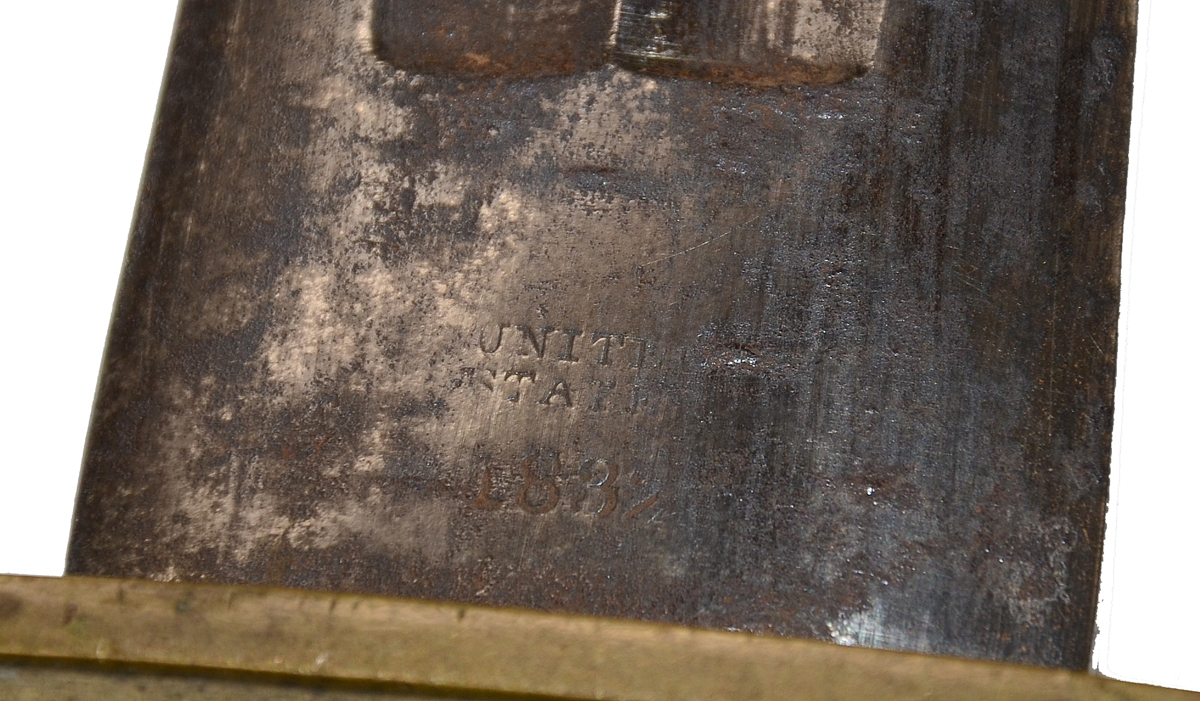


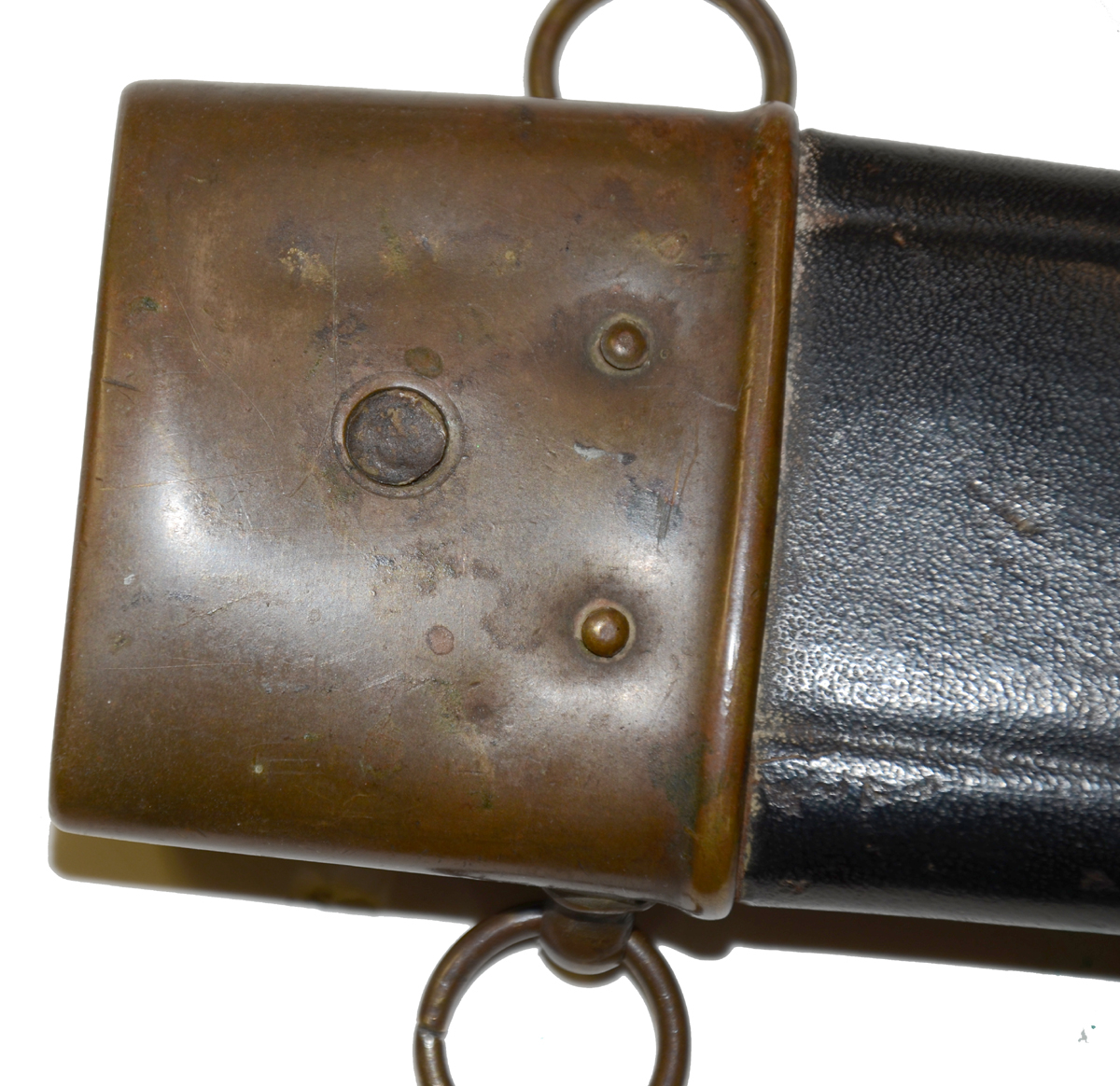
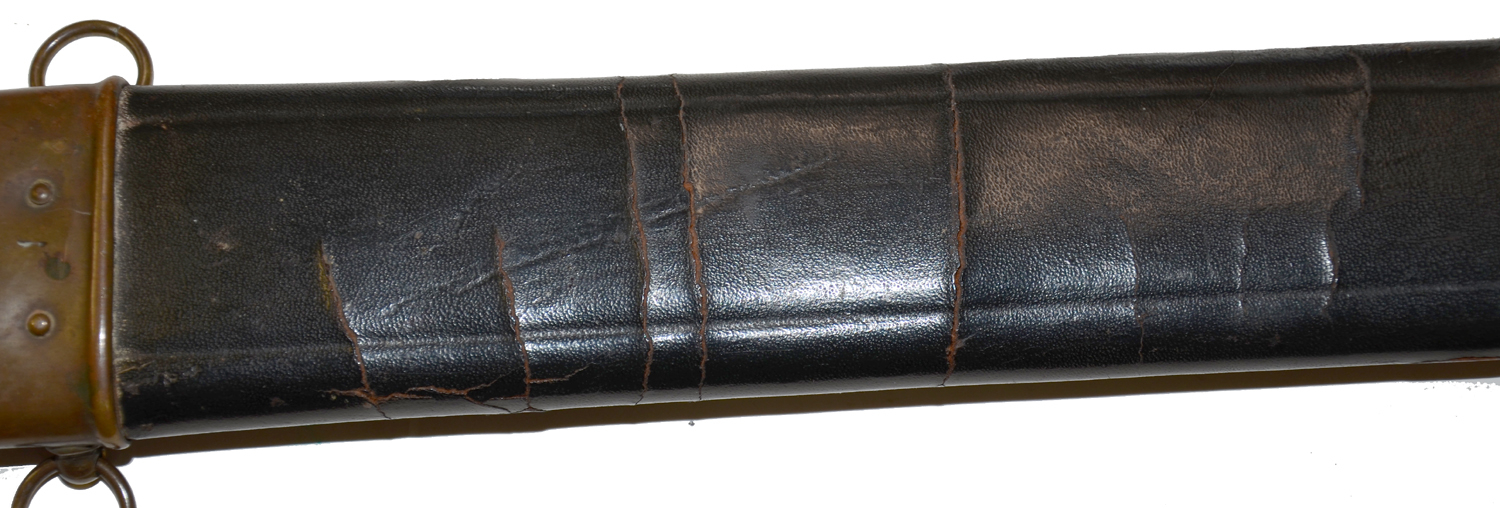

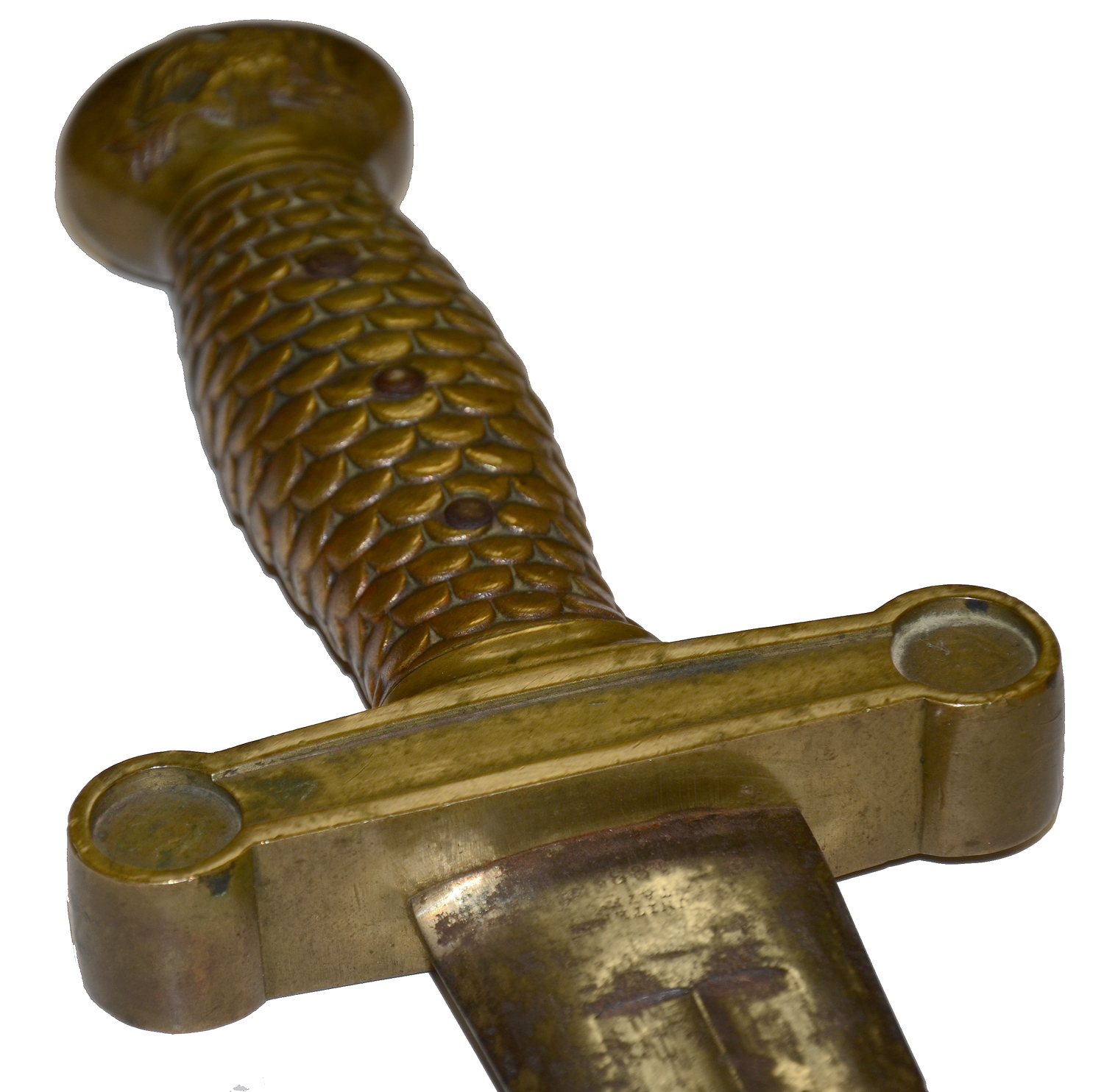

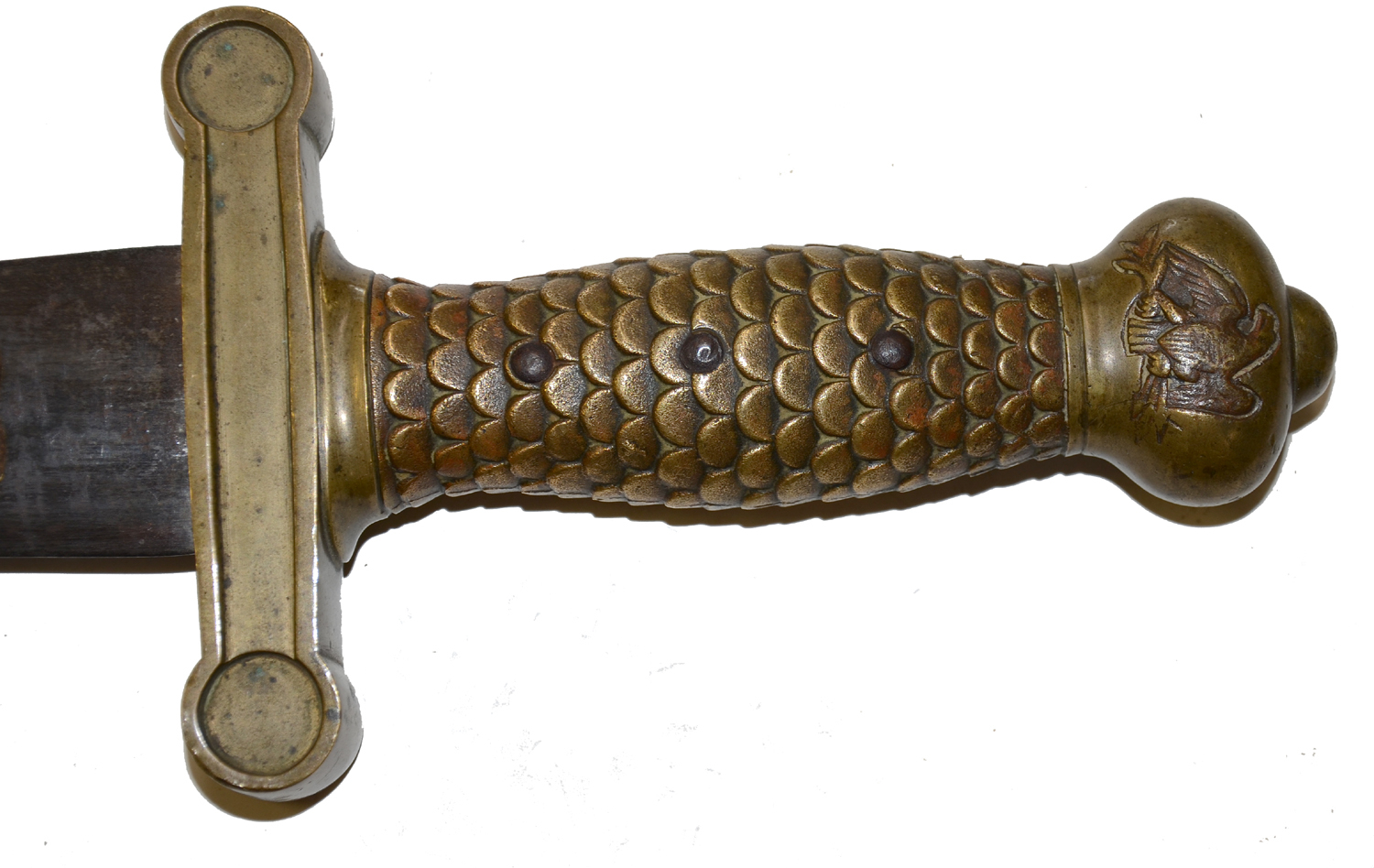



$1,695.00 SOLD
Originally $2,250.00
Quantity Available: None
Item Code: 870-465
Among the new standardized sword patterns adopted by the U.S. Army between 1832 and 1834 was a short sword was modeled on the French 1816 pattern for artillerymen on foot. Looking like an ancient Roman gladius, the sword might have been useful to artillerymen for last-ditch personal defense, clearing ground for guns, and even cutting dead artillery horses out of their harness in action. In the U.S. the sword was also designated in the early years for infantry sergeants and likely carried by musicians as well. N.P. Ames accepted the first U.S. contracts, manufactured the blades and subcontracted with his brother-in-law Samuel Huse for the brass hilts and scabbard mounts in the early years and with Robert Dingee for the scabbards. It was a popular sword, with significant numbers going to fraternal organizations, militia units, and states by direct purchase or through the U.S. under the militia act, which Ames encouraged as part of his marketing.
This is a very scarce (in Thillmann’s evaluation) example from the first year of production. The ricasso is clearly stamped on one side of the ricasso, UNITED / STATES / 1832 with just slight rubbing at left and right, and a faint [eagle] / N.P AMES / SPRINGFIELD stamp on the other. We see no S. Huse / Newburyport stamp, which can be small and inconsistently placed, or inspector’s mark on the brass hilt, indicating the sword was likely a direct private purchase by a militia group. The scabbard is certainly a militia pattern. The upper mount has had the frog stud removed and is fitted with a sling ring on either side for suspension from a non-regulation belt.
The scabbard on this is solid. The surface shows age cracks, but good color, little loss of finish, no breaks or repairs, a good rear seam, and very well-defined impressed border lines back and front. The brass mounts have a nice, untouched patina, slightly darker than the hilt, but not much so and perfectly acceptable in a scabbard that had to be custom altered to the specifications of a private purchaser. The blade shows some bright metal and well-defined fullers, but gray spots along the edges and broader spots near the tip. The edge shows some roughness. There is some shallow pitting near the guard. Nevertheless, the 1832 date and “United States” stamps are unmistakable, marking it as one of the very first made by Ames, only 600 of which were delivered by December 1832. They had a long service history and use: this one even dates four years before the Alamo. Thillmann notes that, “very few 1832-dated examples have turned up in research for this work.” (For a full discussion of the pattern, history, variations, etc., see Thillmann’s CW Swords volume and follow-up articles in Man-at-Arms magazine.)
This is a very hard-to-find date on this pattern U.S. sword. [sr] [ph:L]
~~~~~~~~~~~~~~~~~~~~~~~~~~~~~~~~~~~
THIS ITEM, AS WITH ALL OTHER ITEMS AVAILABLE ON OUR WEB SITE,
MAY BE PURCHASED THROUGH OUR LAYAWAY PROGRAM.
CLICK HERE FOR OUR POLICIES AND TERMS.
THANK YOU!
Inquire About VERY SCARCE 1832 DATED FOOT ARTILLERY SHORT SWORD, FIRST YEAR OF PRODUCTION
Most Popular
Historical Firearms Stolen From The National Civil War Museum In Harrisburg, Pa »
Theft From Gravesite Of Gen. John Reynolds »
Selection Of Unframed Prints By Don Troiani »
Fine Condition Brass Infantry Bugle Insignia »
Large English Bowie Knife With Sheath 1870’S – 1880’S »
Imported (Clauberg) Us Model 1860 Light Cavalry Officer's Saber »
featured item
FIRST ARMY CONTRACT SPENCER RIFLE: MICHIGAN CAVALRY BRIGADE AT GETTYSBURG
The story of Spencer rifle contracts, deliveries, and government payments for purchases is complicated. Laid out by Roy Marcot in his book on Spencer’s and in a 1997 article in “Man at Arms” by Wiley Sword, who has established the serial number… (490-7231). Learn More »


